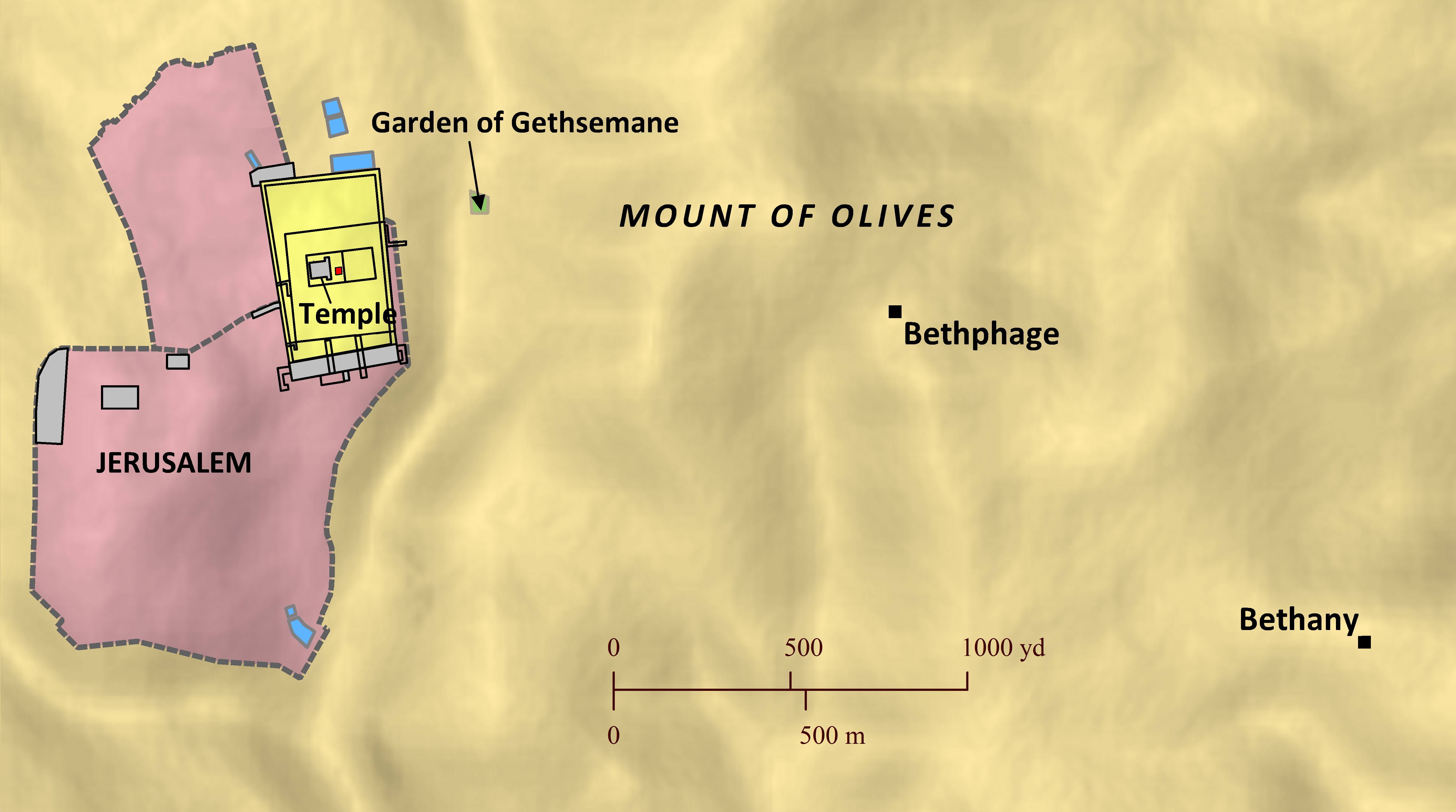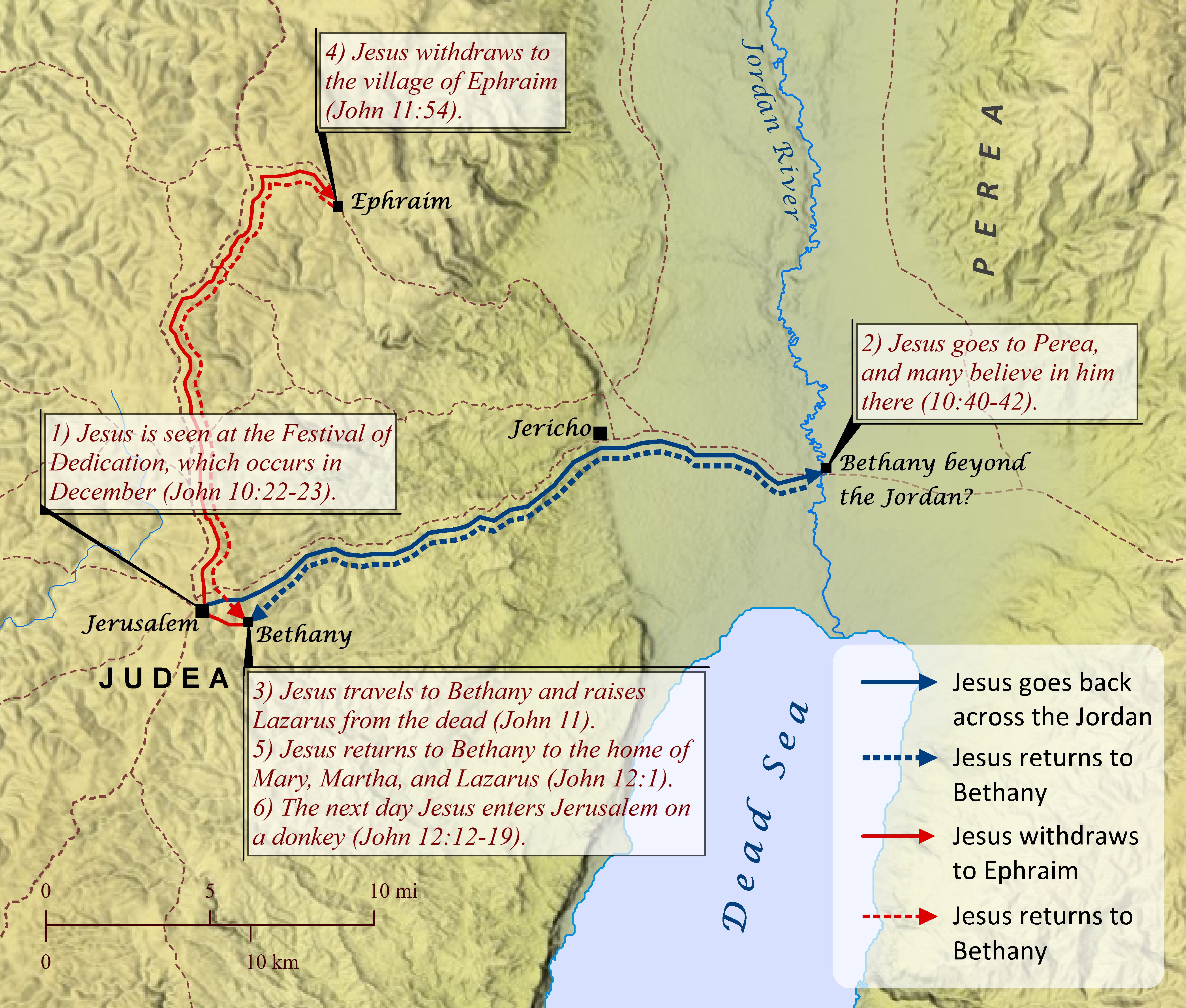Note: This view shows ‘verses’ which are not natural language units and hence sometimes only part of a sentence will be visible—click on any Bible version abbreviation down the left-hand side to see the verse in more of its context. Normally the OET discourages the reading of individual ‘verses’, but this view is only designed as a tool for doing comparisons of different translations—the older translations are further down the page (so you can read up from the bottom to trace the English translation history). The OET segments on this page are still very early looks into the unfinished texts of the Open English Translation of the Bible—please double-check these texts in advance before using in public.
AICNT But Judas Iscariot [[son of Simon]],[fn] one {of}[fn] his disciples, the one who was going to betray him, says,
OEB One of the disciples, Judas Iscariot, who was about to betray Jesus, asked,
WEBBE Then Judas Iscariot, Simon’s son, one of his disciples, who would betray him, said,
WMBB Then Judah Iscariot, Simon’s son, one of his disciples, who would betray him, said,
NET But Judas Iscariot, one of his disciples (the one who was going to betray him) said,
LSV Therefore one of His disciples—Judas Iscariot, of Simon, who is about to deliver Him up—says,
FBV But one of the disciples, Judas Iscariot, who would later betray Jesus, asked,
TCNT Then [fn]one of his disciples, Judas Iscariot, Simon's son, who was about to betray him, said,
T4T But one of his disciples, Judas Iscariot, (OR, Judas, the man from Kerioth Town) objected. He was the one who later enabled Jesus’ enemies to seize him.
LEB But Judas Iscariot, one of his disciples (the one who was going to betray him) said,
BBE But one of his disciples, Judas Iscariot (who was to give him up), said,
Moff One of his disciples, Judas Iscariot (who was to betray him), said,
Wymth Then said Judas (the Iscariot, one of the Twelve—the one who afterwards betrayed Jesus),
ASV But Judas Iscariot, one of his disciples, that should betray him, saith,
DRA Then one of his disciples, Judas Iscariot, he that was about to betray him, said:
YLT Therefore saith one of his disciples — Judas Iscariot, of Simon, who is about to deliver him up —
Drby One of his disciples therefore, Judas [son] of Simon, Iscariote, who was about to deliver him up, says,
RV But Judas Iscariot, one of his disciples, which should betray him, saith,
(But Yudas Iscariot, one of his disciples, which should betray him, saith/says, )
SLT Then says one of his disciples, Judas Iscariot, of Simon, being about to deliver him up,
Wbstr Then saith one of his disciples, Judas Iscariot, Simon's son , who was to betray him,
KJB-1769 Then saith one of his disciples, Judas Iscariot, Simon’s son, which should betray him,
(Then saith/says one of his disciples, Yudas Iscariot, Simon’s son, which should betray him, )
KJB-1611 Then saith one of his disciples, Iudas Iscariot, Simons sonne, which should betray him,
(Modernised spelling is same as from KJB-1769 above, apart from marking of added words (and possibly capitalisation and punctuation))
Bshps Then sayde one of his disciples, euen Iudas Iscariot Simons sonne, which shoulde betraye hym.
(Then said one of his disciples, even Yudas Iscariot Simons son, which should betray him.)
Gnva Then said one of his disciples, euen Iudas Iscariot Simons sonne, which should betray him:
(Then said one of his disciples, even Yudas Iscariot Simons son, which should betray him: )
Cvdl Then sayde one of his disciples, Iudas Iscarioth Symons sonne, which afterwarde betrayed him:
(Then said one of his disciples, Yudas Iscarioth Simons son, which afterward betrayed him:)
TNT Then sayde one of his disciples name Iudas Iscariot Simons sonne which afterwarde betrayed him:
(Then said one of his disciples name Yudas Iscariot Simons son which afterward betrayed him: )
Wycl Therfor Judas Scarioth, oon of hise disciplis, that was to bitraye hym,
(Therefore Yudas Scarioth, one of his disciples, that was to betray him,)
Luth Da sprach seiner Jünger einer, Judas, Simons Sohn, Ischariot, der ihn hernach verriet:
(So spoke his disciple one/a, Yudas, Simons son, Ischariot, the/of_the him/it afterwards verriet:)
ClVg Dixit ergo unus ex discipulis ejus, Judas Iscariotes, qui erat eum traditurus:
(He_said therefore one from students his, Yudas Iscariotes, who was him traditurus: )
UGNT λέγει δὲ Ἰούδας ὁ Ἰσκαριώτης, εἷς τῶν μαθητῶν αὐτοῦ, ὁ μέλλων αὐτὸν παραδιδόναι,
(legei de Youdas ho Iskariōtaʸs, heis tōn mathaʸtōn autou, ho mellōn auton paradidonai,)
SBL-GNT λέγει ⸀δὲ ⸂Ἰούδας ὁ Ἰσκαριώτης εἷς τῶν μαθητῶν αὐτοῦ⸃, ὁ μέλλων αὐτὸν παραδιδόναι·
(legei ⸀de ⸂Youdas ho Iskariōtaʸs heis tōn mathaʸtōn autou⸃, ho mellōn auton paradidonai;)
RP-GNT Λέγει οὖν εἷς ἐκ τῶν μαθητῶν αὐτοῦ, Ἰούδας Σίμωνος Ἰσκαριώτης, ὁ μέλλων αὐτὸν παραδιδόναι,
(Legei oun heis ek tōn mathaʸtōn autou, Youdas Simōnos Iskariōtaʸs, ho mellōn auton paradidonai,)
TC-GNT Λέγει [fn]οὖν [fn]εἷς ἐκ τῶν μαθητῶν αὐτοῦ, Ἰούδας Σίμωνος Ἰσκαριώτης, ὁ μέλλων αὐτὸν παραδιδόναι,
(Legei oun heis ek tōn mathaʸtōn autou, Youdas Simōnos Iskariōtaʸs, ho mellōn auton paradidonai, )
Key for above GNTs: yellow:punctuation differs, red:words differ (from our SR-GNT base).
BMM BibleMapper.com Maps:

Bethany and Bethphage
Matthew 21:1-17; Mark 11:1-11; Luke 19:28-48; John 12:1-19; see also Matthew 26:6-13; Mark 14:3-9
At the start of Passover one week before he was crucified, Jesus and his disciples traveled to Jerusalem, approaching the city from the east. When they arrived at the village of Bethphage, Jesus mounted a donkey and rode down the Mount of Olives as a humble king entering his capital city. Along the way, many people laid branches and cloaks in his path to welcome him. After Jesus entered the city, he immediately went up to the Temple and drove out the moneychangers and merchants there, and he healed the blind and the lame. Then he traveled nearly two miles outside the city to the village of Bethany to spend the night, which appears to have been where he typically lodged each night while visiting Jerusalem during the crowded Passover festival. Bethany is also where Jesus’ close friends Mary, Martha, and Lazarus lived. One evening while Jesus was there at a large dinner party given in his honor, Martha served the food, and Mary poured expensive perfume on Jesus’ feet and wiped his feet with her hair.

Jesus’ Final Journey to Jerusalem
Much like the difficulties of discerning the Israelites’ journey to the Promised Land (see here), the task of reconciling the four Gospel accounts of Jesus’ final journey to Jerusalem into one coherent itinerary has proven very challenging for Bible scholars. As with many other events during Jesus’ ministry, the accounts of Matthew, Mark, and Luke (often referred to as the Synoptic Gospels) present a noticeably similar account of Jesus’ final travels, while John’s Gospel presents an itinerary that is markedly different from the others. In general, the Synoptic Gospels present Jesus as making a single journey to Jerusalem, beginning in Capernaum (Luke 9:51), passing through Perea (Matthew 19:1-2; Mark 10:1) and Jericho (Matthew 20:29-34; Mark 10:46-52; Luke 18:35-19:10), and ending at Bethany and Bethphage, where he enters Jerusalem riding on a donkey (Matthew 21:1-11; Mark 11:1-11; Luke 19:28-44). John, on the other hand, mentions several trips to Jerusalem by Jesus (John 2:13-17; 5:1-15; 7:1-13; 10:22-23), followed by a trip to Perea across the Jordan River (John 10:40-42), a return to Bethany where he raises Lazarus from the dead (John 11), a withdrawal to the village of Ephraim for a few months (John 11:54), and a return trip to Bethany, where he then enters Jerusalem riding on a donkey (John 12:1-19). The differences between the Synoptics’ and John’s accounts are noteworthy, but they are not irreconcilable. The Synoptics, after noting that Jesus began his trip at Capernaum, likely condensed their accounts (as occurs elsewhere in the Gospels) to omit Jesus’ initial arrival in Jerusalem and appearance at the Festival of Dedication, thus picking up with Jesus in Perea (stage 2 of John’s itinerary). Then all the Gospels recount Jesus’ trip (back) to Bethany and Jerusalem, passing through Jericho along the way. Likewise, the Synoptics must have simply omitted the few months Jesus spent in Ephraim to escape the Jewish leaders (stage 4 of John’s itinerary) and rejoined John’s account where Jesus is preparing to enter Jerusalem on a donkey.

